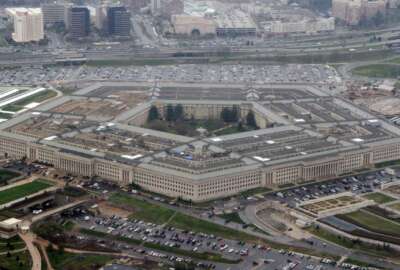

During a virtual workshop with DoD tech leaders, Deputy CIO for Cybersecurity and Senior Information Security Officer Dave McKeown stressed accountability for...
Defense agencies have many technologies to consider for warfighter readiness. One constant is maintaining a defensive cybersecurity posture, and ensuring capabilities are always one-step ahead of the adversaries.
Those were some of the advice from Dave McKeown, deputy chief information officer for Cybersecurity and senior Information Security Officer at the Defense Department. He said his organization considers cyber “hygiene” crucial. This includes checking for real-time monitoring of patch and compliance; configuration guides; removing out-of-date operating systems from the network; and ensuring public-facing websites cannot access the DoD network if they become compromised.
During a virtual workshop with DoD tech leaders Wednesday, sponsored by FCW, McKeown also stressed accountability for preserving cyber readiness.
“What we’re trying to do here, to hold area operation commanders accountable, is to make sure they’re compliant with all of the op orders that are issued by U.S. Cyber Command and JFHQ-DoDIN,” he said – JFHQ-DoDIN stands for Joint Force Headquarters-Department of Defense Information Network. “Also making sure that any named operations where there’s some big muscle movements, some big thing that needs to be implemented from a cyber perspective – that those are tracked.”
Accountability and tracking are also central needs at the Defense Logistics Agency, which has about 12,000 suppliers and performs about 9,000 transactions per day. As Chief Information Officer George Duchak explained, the military’s global supply chain manager is a working capital fund and operates like a nonprofit – buying in bulk to get discounts and saving supplies for worst-case scenarios are best practices. But every item of inventory sitting on the shelf represents dollars still spent, and Duchak said DLA wants to be mindful of that.
The agency has 5.2 million line items and supports 2,400 weapons systems, its Chief Information Officer George Duchak said, hence the agency’s forays into automation. Duchak said about 99% of DLA ordering, billing and inventory and automated, and that 93% of acquisitions are automated.
“Just like any organization, before product is shipped the information moves first,” he said. DLA is now standing up an artificial intelligence “factory” that has data pipelines, low code-no code products and a software infrastructure that employs DevSecOps.
“Part of our DevSecOps infrastructure is to create [an] experimental sandbox, if you will, to try out different things before they go into production to see if they work and if your dev environment is identical to your production environment you won’t have any problems when you deploy,” Duchak said.
Matthew Turek, program manager for the Information Innovation Office at the Defense Advanced Research Projects Agency, said DoD is in a kind of “second wave” of AI, but that those waves ebb and flow according to technical progress and corresponding funding.
DARPA views AI across waves of symbolic reasoning, prediction and statistical learning, and contextual adaptation, Turek said. He described the first wave as hand-coded rules that engineers develop.
“That allowed us to do reasoning over relatively narrow problems … but one of the challenges is they had no ability to learn. So it’s essentially just executing a set of rules and there’s no ability to learn on the fly, to adapt from data, and there was really no handling of uncertainty.”
Predict and statistical learning is the AI technology that builds models from data from data, learns correlations in the data and exploit it to make decisions – in other words, the more popular technologies such as self-driving cars. Turek said this is the current wave.
But these technologies are limited with when it comes to contextual understanding and reasoning capabilities – the third wave — which are needed to construct models for real world phenomena.
“And so from an investment standpoint, we’re really investing to move from computers as tools to computers as partners, investing in things like common-sense reasoning, continuing our investments in theoretical foundations of machine learning, and applying those to complex DoD problems,” he said.
Copyright © 2025 Federal News Network. All rights reserved. This website is not intended for users located within the European Economic Area.
Amelia Brust is a digital editor at Federal News Network.
Follow @abrustWFED

